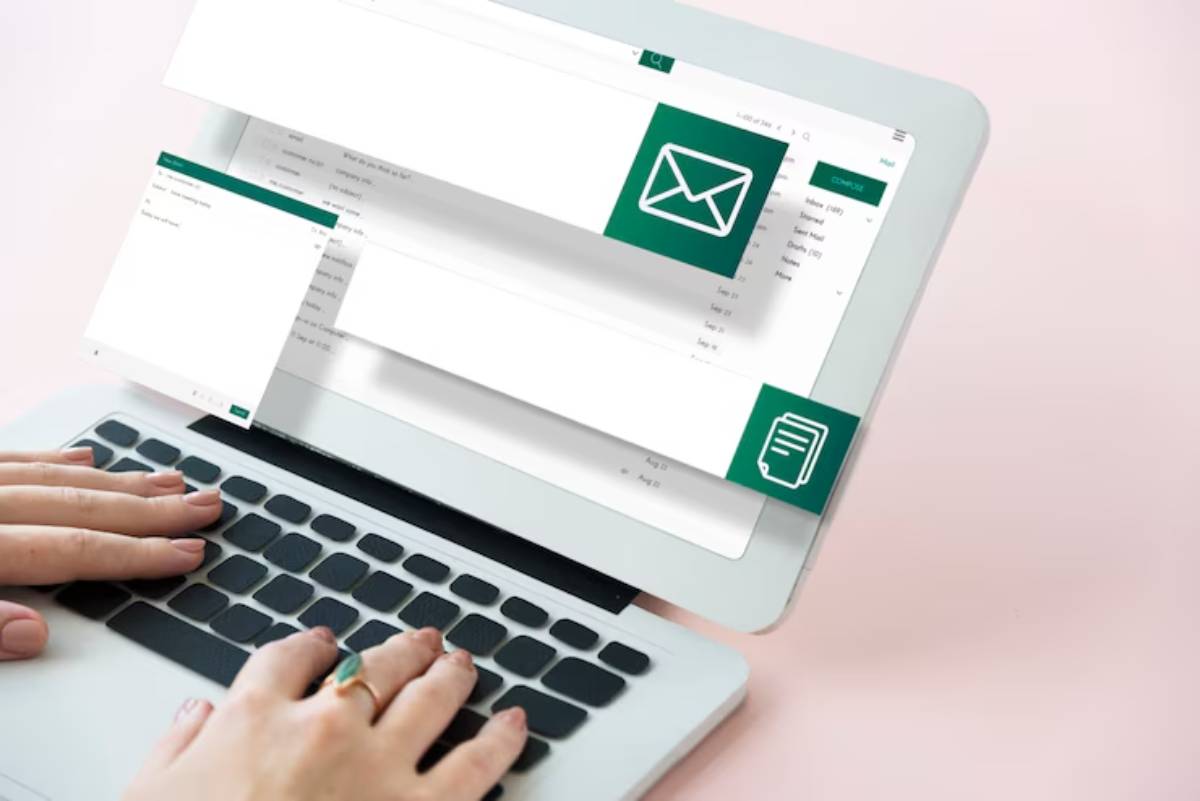The Personal Development Blog

Inbox Zero: Simplify Your Email Life
You open your inbox and there it is. A red badge glaring with three digits. Maybe four. Some unread messages are important. Others are newsletters, notifications, or things you meant to read but never quite got to. And just like that, your stress levels spike — all before your second sip of coffee.
Sound familiar?
Email is one of our most powerful communication tools, yet it’s also one of the biggest sources of digital overwhelm. Between work demands, personal updates, promotional spam, and notifications from every app you’ve ever installed, it’s easy to feel like your inbox is managing you, not the other way around.
That’s where Inbox Zero comes in — not just as a method to clear your email, but as a mindset to simplify your digital life.
In this article, we’ll explore how the inbox zero strategy supports email productivity and email stress relief, and how you can adopt it in a realistic, sustainable way — without obsessing over hitting “zero” all the time.
What Is Inbox Zero, Really?
Let’s start with a little myth-busting.
Inbox Zero isn’t about having an empty inbox at all times. It’s about creating a system where your inbox is not your to-do list, and email doesn’t dominate your mental space.
The term was coined by productivity expert Merlin Mann, who defined it as a process of “managing your inbox to zero time and energy wasted.”
In other words, Inbox Zero is about:
- Being intentional with how you read, sort, and respond to emails
- Avoiding mental clutter caused by inbox overload
- Designing a process that keeps your inbox under control, not constantly overflowing
It’s not a one-size-fits-all rule — it’s a flexible framework for smarter email habits.
The Hidden Cost of an Overloaded Inbox
Let’s face it: a messy inbox isn’t just inconvenient. It quietly eats into your focus, energy, and even your well-being.
1. Cognitive Load
Every time you see dozens (or hundreds) of unread messages, your brain registers them as unfinished tasks. This creates cognitive friction — your attention is pulled even when you’re not actively checking email.
Over time, that results in:

- Lower focus at work
- Mental fatigue
- A background sense of unease
According to a Harvard Business Review study, professionals check their email an average of every 37 minutes, and often even more frequently when under stress.
2. Lost Productivity
Constant inbox-checking leads to multitasking, which research shows reduces productivity by as much as 40%. Jumping between emails and tasks also leads to slower completion times and more errors.
3. Emotional Drain
An overflowing inbox can feel like an endless to-do list you didn’t sign up for. It triggers guilt (“I should’ve replied”), overwhelm (“I don’t know where to start”), and avoidance (“Maybe later”).
If you’ve ever felt crushed by email, you’re not alone.
Real-Life Example: Priya’s Email Breakthrough
Priya, a small business owner, used to keep her inbox open all day “just in case” something urgent came in. But she found herself replying reactively, missing details, and constantly feeling stressed.
She decided to try Inbox Zero — not to empty her inbox entirely, but to regain control. She started checking emails at three set times a day, used folders to file non-urgent messages, and created auto-responses for common queries.
Within two weeks, her inbox went from 1,500+ unread messages to under 30. “It wasn’t about deleting everything,” she said. “It was about finally feeling on top of it all.”
The Core Principles of Inbox Zero
The good news? You don’t need a complicated system or a new app. Inbox Zero works because it’s simple and adaptable.
Here are the key principles that make it effective:
1. Email Isn’t Your Job — It’s a Tool
Unless you work in customer support, replying to emails probably isn’t the core of your job. Don’t treat it like one. Schedule email check-ins like you would any other task — instead of living in your inbox.
2. Process, Don’t Browse
When you open your inbox, don’t just scroll passively. Decide:

- Reply now (if under 2 minutes)
- Delete it
- Archive it
- Defer to a task list or calendar
This helps you move messages out of your inbox and into action, without letting them pile up.
3. Create a Folder Structure That Works for You
The key is clarity, not complexity.
Common folder ideas include:
- Action Needed
- Waiting For
- Read Later
- Archive or Reference
Make them work for your brain. Don’t overdo it — too many folders can become another source of clutter.
Email Productivity Tools That Support Inbox Zero
There’s no shame in using tech to beat tech. Several tools make inbox zero more achievable without extra effort.
1. Email Rules and Filters
Most email platforms (like Gmail and Outlook) allow you to:
- Automatically sort newsletters into a folder
- Send certain senders straight to the archive
- Star or label emails with keywords
These filters can cut your inbox noise by half with a one-time setup.
2. Snooze Function
Modern inboxes allow you to “snooze” emails, making them disappear and return at a time that works better. This is great for non-urgent messages you don’t want to forget.
3. Unsubscribe Tools
Using apps like Unroll.me or Gmail’s built-in unsubscribe prompt can help you quickly ditch newsletters or promo lists that no longer serve you.
Remember — less incoming mail means less sorting, scanning, and stress. The same logic applies beyond email, especially when you’re juggling multiple productivity tools and platforms. If you’re navigating too many digital systems at once, strategies for avoiding app overload at work can help you streamline further and protect your focus.
Integrating Inbox Zero With Broader Digital Wellness
Inbox Zero isn’t just about productivity — it’s about peace of mind. And it works best when paired with other digital clarity practices.
For instance, if you’re already trying to declutter your smartphone for mental clarity, cleaning up your email is the next logical step.
Together, these habits reduce tech fatigue and make your daily workflow feel more spacious and intentional.
Real-World Scenario: Jamie’s Morning Clarity Shift
Jamie, a graphic designer, used to start every morning by checking email in bed. Within 10 minutes, she’d feel anxious, flooded by updates and requests before she’d even brushed her teeth.
After learning about Inbox Zero, she made one change: no email before 10 am.
She now begins her mornings with creative work and checks email only after completing at least one meaningful task. “My head is clearer,” she says. “I’m no longer letting other people’s agendas run my day.”
Sometimes, that’s all it takes.
Common Myths About Inbox Zero
“I have to reply to everything immediately.”
Nope. Inbox Zero doesn’t mean replying to every message. It means knowing which messages deserve your attention — and when.
Use labels, folders, or even canned responses to handle low-priority or repetitive emails efficiently.
“I’ll never get to zero. Why bother?”
Zero isn’t the point — clarity is. Even if you reach 50 emails instead of 500, you’re still winning. Inbox Zero is about mindset, not perfection.
“It’ll take hours to set up.”
You can start small. Archive everything older than two weeks. Unsubscribe from five newsletters today. Build as you go. You don’t need to overhaul your life in one go — just shift direction.
Final Thoughts: Your Inbox, Your Control
Your inbox doesn’t have to feel like a burden. With the right approach, it can become what it was always meant to be — a useful tool for communication, not a source of anxiety.
The Inbox Zero strategy gives you email productivity with boundaries. You stop reacting and start responding on your terms. You get your mental space back.
Start small. Choose one new email habit this week. Maybe it’s checking email only twice a day. Maybe it’s deleting 20 old messages. Whatever it is, you’ll feel lighter — and more in control.
Because simplifying your email life isn’t about rules. It’s about relief.









